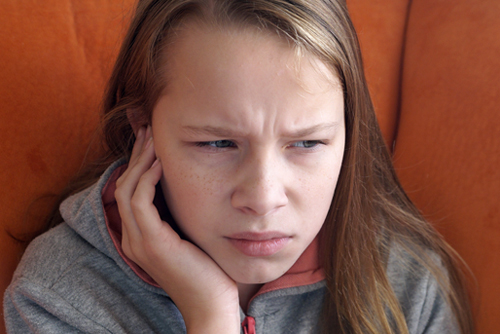Children's ear infections
March 2, 2021
Ear infections are among the common ailments children can experience, and cause varying degrees of pain and discomfort. Ear infections occur most often in children who are between three months and three years old, and are common until eight years old.
Children are more susceptible to ear infections than adults mainly because their tubes (eustachian tubes) connecting the middle ears to the upper sections of the throat, are smaller and more level and do not drain fluid as efficiently. Additionally, children’s adenoids (two small pads of tissue near the opening of the eustachian tubes), are larger than in adults. This especially becomes an issue when adenoids are swollen from fighting illness. Lastly, since children’s immune systems are not fully developed, their vulnerability to ear infections increases further.
The two most common types of ear infection are the “middle ear infection” where fluid builds up behind the eardrum, allowing bacteria to enter the middle ear, or section between the eardrum and inner ear. The middle ear infection is often a side effect of allergies, a cold, or sore throat. Ear infections are not contagious, but the illness leading up to them can be. The second type of ear infection is commonly referred to as “swimmers ear.” This is usually caused by water that stayed in the outer ear canal for a long period of time, providing a moist environment for bacteria to grow.
Common ear infection symptoms include ear pain, rubbing or pulling at the ears, fever, sleep difficulties, appetite loss, and fluid draining from one or both ears. Children can also experience temporary hearing loss, coughing, vomiting, runny nose, and diarrhea.
While most ear infections clear up in a few days on their own, children who continue to experience pain may require a prescription from their medical provider. If your child has a high fever, headache, starts vomiting, or has pain behind their ear(s), visit your family clinic immediately. At home, you can try OTC medication such as ibuprofen and acetaminophen to decrease pain and lower the fever. A hot water bottle or warm cloth applied to the affected ear also helps minimize pain.
Here are a few tips to help avoid ear infections: wash hands often to avoid germs that may cause illness; get your vaccines (flu shot, etc); if the child is a baby or toddler, do not allow the little one to go to sleep drinking water, milk, or juice since it heightens fluid collection in the eustachian tubes. Lastly, according to the CDC, children exposed to secondhand smoke also have a higher rate of ear infections due to more fluid buildup in their ears.
